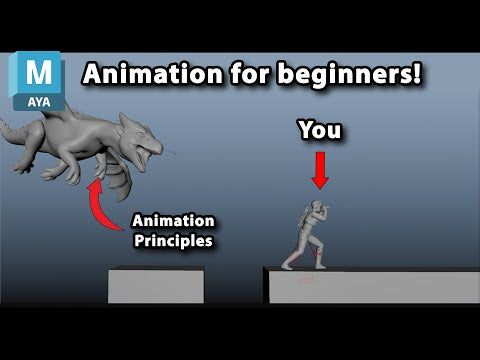Your Cart is Empty
Customer Testimonials
-
"Great customer service. The folks at Novedge were super helpful in navigating a somewhat complicated order including software upgrades and serial numbers in various stages of inactivity. They were friendly and helpful throughout the process.."
Ruben Ruckmark
"Quick & very helpful. We have been using Novedge for years and are very happy with their quick service when we need to make a purchase and excellent support resolving any issues."
Will Woodson
"Scott is the best. He reminds me about subscriptions dates, guides me in the correct direction for updates. He always responds promptly to me. He is literally the reason I continue to work with Novedge and will do so in the future."
Edward Mchugh
"Calvin Lok is “the man”. After my purchase of Sketchup 2021, he called me and provided step-by-step instructions to ease me through difficulties I was having with the setup of my new software."
Mike Borzage
Design Software History: The Evolution of Design Software: From Sketchpad to AI and Cloud-Based Solutions
August 20, 2024 4 min read


The Early Days of Design Software
The mid-20th century marked the dawn of computing, characterized by room-sized computers and limited processing power. The initial motivation for developing design software was driven by the need to simplify complex drawing and drafting tasks in engineering and architecture. These early tools laid the groundwork for the sophisticated design software we use today.
Pioneers and Their Contributions
One of the most influential figures in the early days of design software was Ivan Sutherland, who developed Sketchpad in 1963. Sketchpad introduced revolutionary concepts such as object-oriented graphics and constraints, which allowed users to manipulate visual symbols directly on a screen. This was groundbreaking at the time and set the stage for future developments in computer-aided design (CAD).
Alongside Sutherland, other pioneers made significant contributions. Lockheed developed CADAM (Computer Augmented Design and Manufacturing), which became one of the early commercial CAD systems. These early efforts were crucial in demonstrating the potential of computer technology to transform design processes.
Early Applications and Limitations
The initial applications of design software were primarily in the aerospace and automotive industries, where precise drafting and complex geometries were essential. Despite their potential, early design software faced several technical limitations, such as limited graphical capabilities, slow processing speeds, and the lack of user-friendly interfaces. These challenges hindered widespread adoption but also spurred further innovation in the field.
The Rise of CAD and Solid Modeling
Transition from 2D to 3D Modeling
The transition from 2D drafting to 3D modeling was a significant milestone in the history of design software. Early CAD systems focused on automating the drafting process, but the advent of 3D modeling techniques allowed for more accurate and detailed representations of physical objects. Key milestones in this evolution include the release of AutoCAD by Autodesk in 1982 and CATIA by Dassault Systèmes, both of which played pivotal roles in popularizing 3D modeling.
Mathematical and Geometric Foundations
Solid modeling is underpinned by complex mathematical and geometric principles. Geometric modeling involves the representation of an object's shape using mathematical constructs. Important contributions in this field were made by mathematicians and computer scientists who developed the foundational theories of solid modeling. These include the boundary representation (B-rep) and constructive solid geometry (CSG) methods.
Development of Core Technologies
The development of core technologies such as Boolean operations, boundary representations (B-rep), and Non-Uniform Rational B-Splines (NURBS) were instrumental in advancing solid modeling. These technologies allowed for the precise representation and manipulation of complex geometries. Pro/ENGINEER, introduced by PTC, was notable for its introduction of parametric modeling, which revolutionized the way engineers and designers approached the design process.
Innovations in Visualization and Simulation
Advances in Rendering and Visualization
The development of photorealistic rendering techniques transformed how designs were visualized and presented. This advancement was driven by software such as Blender, Maya, and 3ds Max, which provided tools for creating highly detailed and lifelike images. These tools enabled designers to better communicate their ideas and make more informed decisions during the design process.
Simulation and Analysis Tools
Simulation and analysis tools became integral components of design software, allowing for more accurate predictions of how products would perform in real-world conditions. The incorporation of Finite Element Analysis (FEA) enabled designers to conduct structural analysis and identify potential weaknesses in their designs. Similarly, Computational Fluid Dynamics (CFD) tools allowed for the simulation of fluid flow and heat transfer, further enhancing the design process.
Integration with Virtual and Augmented Reality
Virtual Reality (VR) and Augmented Reality (AR) have played a significant role in enhancing product visualization. These technologies provide immersive experiences that allow designers and stakeholders to interact with digital models in a more intuitive and engaging way. Key contributions in this area come from software platforms such as Unity and Unreal Engine, which have made it easier to create and deploy VR/AR applications.
The Modern Era and Future Directions
Cloud-Based and Collaborative Design Software
The advent of cloud computing has had a profound impact on design collaboration. Cloud-based design software such as Fusion 360 and Onshape have made it easier for teams to work together in real-time, regardless of their physical location. These tools offer several advantages, including easy access to the latest software updates, enhanced data security, and the ability to scale resources as needed. However, they also present challenges such as data privacy concerns and the need for reliable internet connectivity.
AI and Machine Learning in Design
Artificial Intelligence (AI) and Machine Learning (ML) are transforming design automation and optimization. AI-driven design tools can analyze vast amounts of data and generate optimized design solutions, significantly reducing the time and effort required. Examples of AI-driven design tools include Autodesk's Dreamcatcher and Generative Design in Fusion 360, which use algorithms to explore thousands of design possibilities and identify the best options based on specified criteria.
Emerging Trends and Future Prospects
Several emerging trends are poised to shape the future of design software. Blockchain technology, for instance, holds promise for enhancing data security and transparency in design and manufacturing processes. Additionally, ongoing developments in generative design and additive manufacturing are opening up new possibilities for creating complex and customized products. As we look to the future, it is clear that design software will continue to evolve, driven by advancements in technology and changing industry needs.
- Generative Design: Uses AI to generate multiple design alternatives based on specified constraints.
- Additive Manufacturing: Enables the creation of complex geometries that are not possible with traditional manufacturing methods.
- Blockchain: Enhances data security and traceability in design and manufacturing processes.
In conclusion, the history of design software is a testament to the power of technology to transform the way we create and innovate. From the early days of Sketchpad to the latest advancements in AI and cloud computing, design software has continually evolved to meet the needs of designers and engineers across various industries. As we move forward, the ongoing integration of new technologies promises to further revolutionize the design process and unlock new possibilities for creativity and innovation.
Also in Design News

Animation for Beginners - Part 2: 12 Animation Principles you NEED to know
January 14, 2025 1 min read
Read More
ZBrush Tip: Enhancing 3D Model Precision with ZBrush's TrimCurve Tool
January 14, 2025 2 min read
Read More
Revit Tip: Utilizing Design Phases to Enhance Revit Project Efficiency and Collaboration
January 14, 2025 1 min read
Read MoreSubscribe
Sign up to get the latest on sales, new releases and more …


